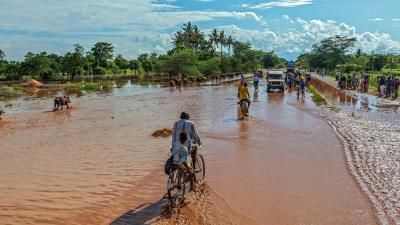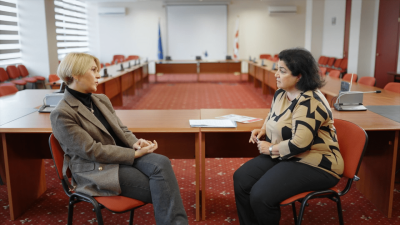Workplace violence and harassment, whether that’s physical, psychological, or sexual, remains an issue for many people globally. To address this, in 2019 the International Labour Organisation (ILO) adopted a new labour standard, The Violence and Harassment Convention 2019 (C190), which sets clear and standardised definitions of what constitutes violence and harassment in the workplace.
However, a significant standardised global dataset remained lacking. In response, Lloyd’s Register Foundation and the International Labour Organization (ILO) partnered with Gallup in 2021 to create the first global and comparable measure of the nature and extent of violence and harassment in the workplace. This survey formed part of the broader Lloyd’s Register Foundation World Risk Poll 2021.
“Violence and Harassment in the workplace is endemic” explains Dr Hania Farhan, Senior Director of Methodology at Gallup. According to the Poll, one in five people globally (21%) report having experienced violence and harassment at work in their lifetime. Of those who reported such experiences, almost three in five (59%) experienced it more than once, as explained in Lloyd’s Register Foundation’s 2021 World Risk Poll report, ‘Safe at Work? Global experiences of violence and harassment’.
The Poll underlines key regional variations. For example, Australia and New Zealand has the highest proportion of people reporting experiences of violence and harassment at work, at almost half (48%). In contrast, only 5% of respondents in Central Asia reported workplace violence and harassment. But why is this difference so great?
We joined forces with Susan Maybud, an international consultant on gender equality and former ILO Senior Gender Specialist, to build a deeper understanding of the reasons behind these variations and responses in the data.
Beginning in Georgia, a country reporting extremely low levels of workplace violence and harassment (under 4%) Susan visited IMP, Gallup’s Georgian partner, to gain an insight into their experience as surveyors for the Poll. This conversation reveals that at the time of polling, there was a strong tendency from people to be hesitant discussing their history with violence and harassment in the workplace.
A number of factors are likely to influence this. Speaking to employers and trade unions on the ground, Susan learns that a lack of knowledge, awareness and the weight of cultural norms in the region mean that people may not realise they are victims of violence and harassment at work. There is still a strong stigma in Georgia preventing people speaking candidly about these issues, particularly when it comes to experience of sexual harassment – potentially due to fear of retaliation or job loss.
“Underreporting is a crucial problem here” explains Susan, suggesting the true extent of violence and harassment in Georgia may well be more in line with the World Risk Poll’s global figure of 21%. But institutional efforts demonstrate a positive step forward. Organisations such as the Georgian Trade Unions Confederation and the Labour Inspection Office are working to implement the principles of Convention 190, even though it has not yet been ratified by the country’s government. They are doing this by defining workplace policies, pushing to make changes in government mandates, and raising awareness directly with workers through training opportunities and workshops.
To understand why levels of reporting differ so greatly across the world, Susan also visited Australia, which has the highest proportion of people reporting experiences violence and harassment at work in the Work Risk Poll. Despite being a developed country with low levels of violent crime, the Poll reveals that one in two people here (49%) have experienced workplace violence and harassment in their lifetime.
Speaking with Anna Cody, the Australian Human Rights Commissioner, it is clear that sexual harassment is particularly prevalent across the country, and levels of experience are higher amongst already discriminated against communities. This includes LGBTQI+ workers, First Nations, and migrant workers, as well as other culturally and racially marginalised groups.
Like in Georgia, labour organisations in Australia are working alongside statutory bodies to influence workplace health and safety regulations and concrete legal changes. Amendments to Australian law following the notable Respect@Work report mean, in theory, employers are better equipped to prevent and manage incidences of violence and harassment. Australia has also recently adopted ILO Convention 190 – demonstrating a continued effort to prevent this issue in the future.
While initially seen as an alarming rate of reporting to the World Risk Poll, high percentages of workplace violence and harassment could indicate that the Australian population, in comparison to Georgia, is much more confident and equipped to report such experiences. Global movements like ‘MeToo’, along with media coverage of high-profile cases, are contributing to increased awareness and intolerance towards such behaviours at work.
By digging deeper, Susan’s visits reveal that positive steps towards tackling the uniquely challenging nature of this issue are being taken. However, stigma and other reasons for non-reporting are evident from interviews in both regions. By speaking directly with individuals and organisations on the ground, we know more work needs to be done to ensure that reported levels of violence and harassment here, and across the world, reflect the reality, as a first and fundamental step to tackling the problem.
“Eliminating violence and harassment at work is necessary for a fair and just society” says Susan. By shining a light on some of the stories behind our World Risk Poll data, Lloyd’s Register Foundation hopes to continue raising awareness and understanding of violence and harassment in the workplace and the detrimental impact it has for people across the world.





